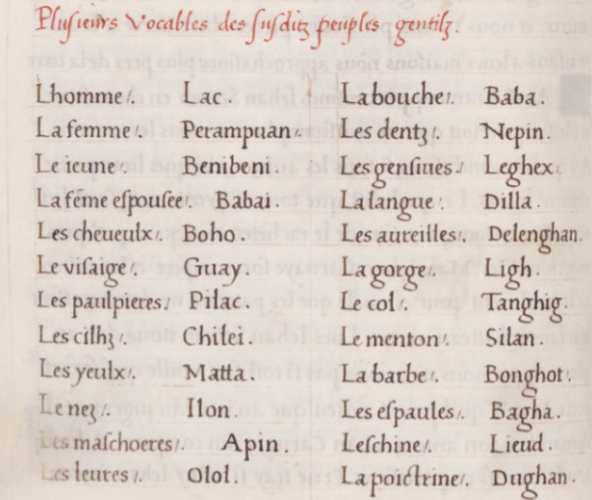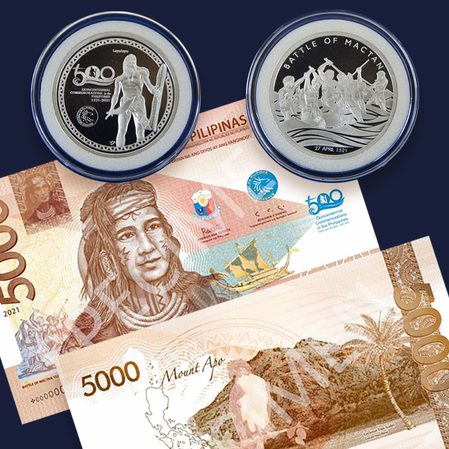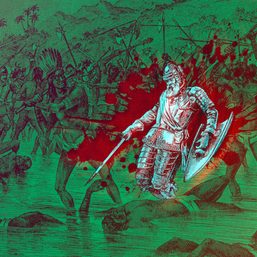SUMMARY
This is AI generated summarization, which may have errors. For context, always refer to the full article.
![[OPINION] The more we kill Magellan, the more we bury our own history](https://www.rappler.com/tachyon/2021/03/imho-magellan-death-sq.jpg)
Before reaching the Philippines, Ferdinand Magellan was already dead, twice killed: first by the Portuguese who thought of him as a traitor, and second by the mutinous Spanish members of his fleet who thought of him as an agent of the Portuguese crown.
After his ultimate death in the Battle of Mactan, subsequent Filipino retellings in books and social media posts (both often with a rich glaze of fantasy) continue to kill him and celebrate his death, as if it were a “national” victory against a foreign invader. It will soon be 500 years since his actual demise; that’s five centuries of energy spent just to continuously kill one man.
And it seems like we’ve yet to grow tired of doing so. Our eyes are permanently set on Magellan, aiming for another lethal strike, so much so that the other things that matter, such as actual history, are relegated to the blurry periphery. The elevation of Cilapulapu to an almost mythical figure — as the perfect foil for the alien agitator — is symptomatic of this historical myopia. There is no actual evidence that proves it was Cilapulapu that killed Magellan. But since killing the enemy takes centerstage, heroes take precedence over history. So not only have we killed Magellan, but we also have the killer himself as a national icon.
We only know of Cilapulapu’s existence thanks to the meager mentions made by Antonio Pigafetta in his account of the Armada de Molucca. But despite scanty citations, Cilapulapu’s legendary figure has overshadowed the many interesting details and personalities of precolonial Philippines recorded by Pigafetta. For example, in the Battle of Mactan (which Cilapulapu may not have been part of), Pigafetta notes that Magellan had been hit by poisonous arrows (flèches envenimées). This to me is far more interesting than the act of killing Magellan, because it tells us that precolonial Filipinos already had a sophisticated knowledge of the natural world and were thus able to extract poisonous chemicals for their weaponry. (READ: Bringing home the Pigafetta manuscripts)
Compared to the other events recorded by Pigafetta, the Battle of Mactan only forms a small section. He wrote more about Filipino food, language, and geography, all of which are given little attention nowadays just to amplify the significance of the battle. And in our insistence on focusing on it, we forego the many flavors and colors of precolonial Philippines so we can bathe in the blood of foreigners.

In their first encounter with Filipinos on March 18, 1521, Pigafetta recounts that they were approached by a boat carrying nine men. When they landed on the island (Homonhon) where the Spaniards were stationed, “one amongst them went towards the captain-general with demonstrations of being very joyous at our arrival.” Magellan returned the courtesy by offering them gifts and trinkets. The Filipinos, meanwhile, had nothing to give, but they promised Magellan and crew that they would be back in a couple of days with food. And they did go back.
One of the delights the Filipinos gave to the Spaniards was a fruit called cocho, which today we know as the noble coconut. After grueling months at sea in the Pacific, the Spaniards would’ve enjoyed the sweet pleasures of coconut milk and meat – and of course, the alcoholic drink made from coconut sap. Pigafetta devotes a special portion of his journal to describe the process of how Filipinos made coconut wine, or what we call today as tuba:
“It must be said that wine proceeds from the said palm trees in the following manner. They make a hole at the summit of the tree as far as its heart, which is named palmito, from which a liquor comes out in drops down the tree, like white must, which is sweet, but with somewhat of bitter. They have canes as thick as the leg, in which they draw off this liquor, and they fasten them to the tree from the evening till next morning, and from the morning to the evening, because this liquor comes little by little.”
For those who grew up in the provinces, this method will be very familiar as it is still practiced, although with some modern contrivances; for example, many use plastic bottles instead of heavier “as thick as the leg” bamboo contraptions to capture the dripping liquid.
Despite the absence of formal scientific institutions, what the example of tuba shows is that precolonial Filipinos had an inkling of the chemical processes necessary to produce alcohol. What emerges from this routine is a picture of a curious people who tinkered and tested what their environment provided them with. Not only that, but they also enjoyed what they made. When Pigafetta was invited by the locals to drink wine with them, he reports a fascinating custom that is somewhat similar to today’s fist-bumping:
“Their fashion of drinking is in this wise, they first raise their hands to heaven, then take the drinking vessel in their right hand, and extend the left hand closed towards the people. This the king did, and presented to me his fist, so that I thought that he wanted to strike me; I did the same thing towards him; so with this ceremony, and other signs of friendship, we banqueted, and afterwards supped with him.”
There is also much to learn about our past from the precolonial Filipino words Pigafetta recorded. Take for instance the words for man and woman, lac and perampuan, respectively. These are extremely similar to the words used today in Indonesia and Malaysia for man (laki-laki) and woman (perempuan). There’s also dilla for tongue, which is akin to the Bahasa (which I’ll use from hereon to mean both Bahasa Indonesia and Melayu) lidah. The word guay is also interesting because it already displays the diversity of languages in the Philippines at such an early period. It means face, which is close to the Hiligaynon word guya meaning the same thing, whereas the word for face in Tagalog is mukha and in Bahasa muka, with only a difference of one letter.

Admittedly, it’s hard to fault Filipinos for emphasizing their defiance against Magellan. As a nation that was in the clutches of foreign powers for most of its history, stories of its heroes and of its victories are necessary panacea to heal the wounds of the past.
Truth be told, as a biologist and historian with a deep fascination for maritime history and marine biology, I am partial to Magellan as he pulled off two of the most impressive feats in naval history: traversing the strait named after him and crossing the Pacific Ocean, all with inaccurate maps and faulty calculations. So it’s quite unsettling that we dismiss his achievements just because our ancestors killed him. (If it were up to me to rename the Philippines, I would christen it as Magelland). But this does not deter me from the fact that he had been stupid enough to join a local dispute he had little knowledge of, and it got him killed. However, it was a conflict that was never “national” in scale, so it could hardly be a triumph of national proportions.
What do we get with nationalism, anyway? Our past tells us that our roots extend far beyond the borders established by modern politics. Should we continue to kill for the “nation” just because we were randomly born within its sovereign stretch? Or should we tear down these artificial entrapments and explore the full extent of our shared histories, and maybe find reasons not to kill strangers, but to enjoy good food and drinks with other people? – Rappler.com
Pippo Carmona is a Filipino biologist and historian of medicine. He writes on the history of medicine in his blog Hippocratic Oats.
All images are taken from the 1525 manuscript of Pigafetta’s journal. All English passages are taken from the 1874 Hakluyt edition.
Add a comment
How does this make you feel?

![[OPINION] Relearning the Spanish language will tell us more about our history](https://www.rappler.com/tachyon/2020/12/relearning-spanish-history-December-9-2020.jpg?fit=449%2C449)
![[The Wide Shot] Peace be with China](https://www.rappler.com/tachyon/2024/07/wideshot-wps-catholic-church.jpg?resize=257%2C257&crop=311px%2C0px%2C720px%2C720px)
![[OPINION] A critique of the CBCP pastoral statement on divorce](https://www.rappler.com/tachyon/2024/07/TL-cbcp-divorce-statement-july-19-2024.jpg?resize=257%2C257&crop=285px%2C0px%2C722px%2C720px)


![[The Wide Shot] Was CBCP ‘weak’ in its statement on the divorce bill?](https://www.rappler.com/tachyon/2024/07/cbcp-divorce-weak-statement.jpg?resize=257%2C257&crop=258px%2C0px%2C719px%2C720px)

![[OPINION] Why celebrate Magellan when there was always Sharif Muhammad Kabungsuwan?](https://www.rappler.com/tachyon/2021/03/tl-sharif-kabungsuwan-640.png?resize=257%2C257&crop_strategy=attention)
![[OPINION] Class struggle: On the history of Christianity in the Philippines](https://www.rappler.com/tachyon/2021/03/Christian-oppression.jpg?resize=257%2C257&crop_strategy=attention)
![[OPINION] No, we shouldn’t celebrate 500 years of Christianity in our country](https://www.rappler.com/tachyon/2021/03/imho-dont-celebrate-500yr-christianity.jpg?resize=257%2C257&crop_strategy=attention)
There are no comments yet. Add your comment to start the conversation.